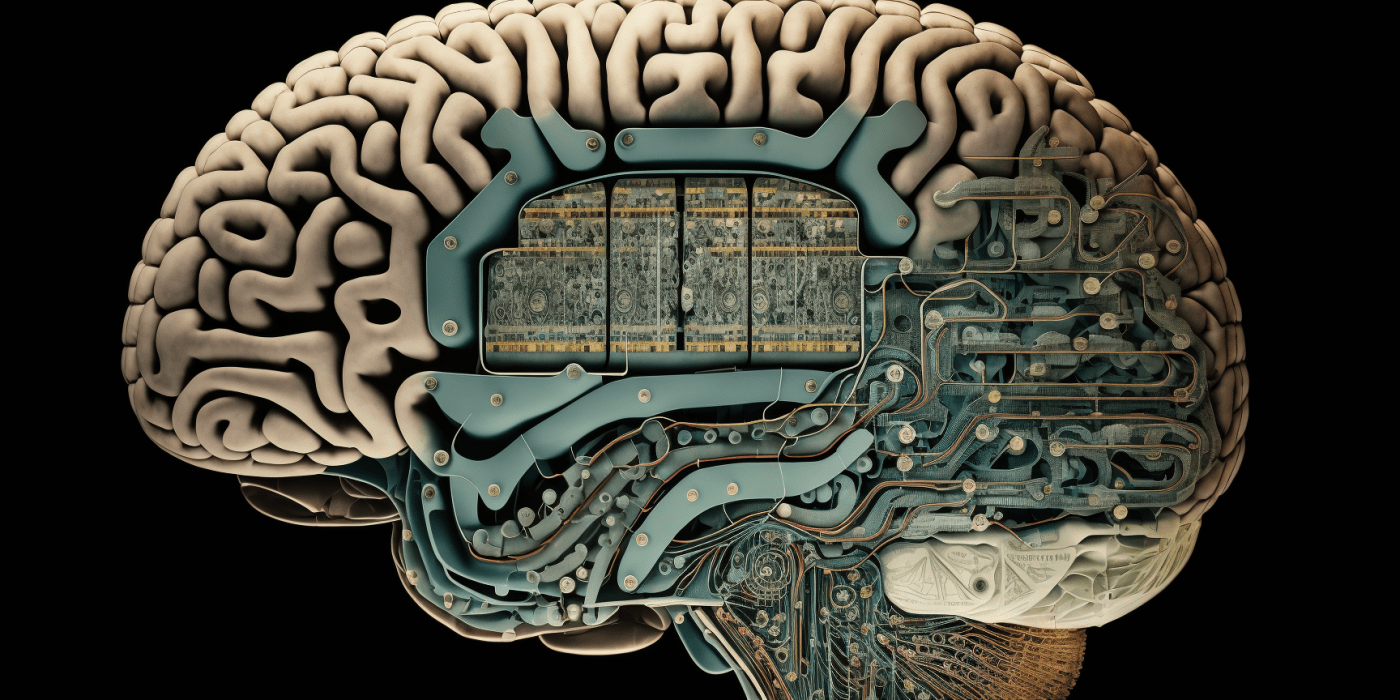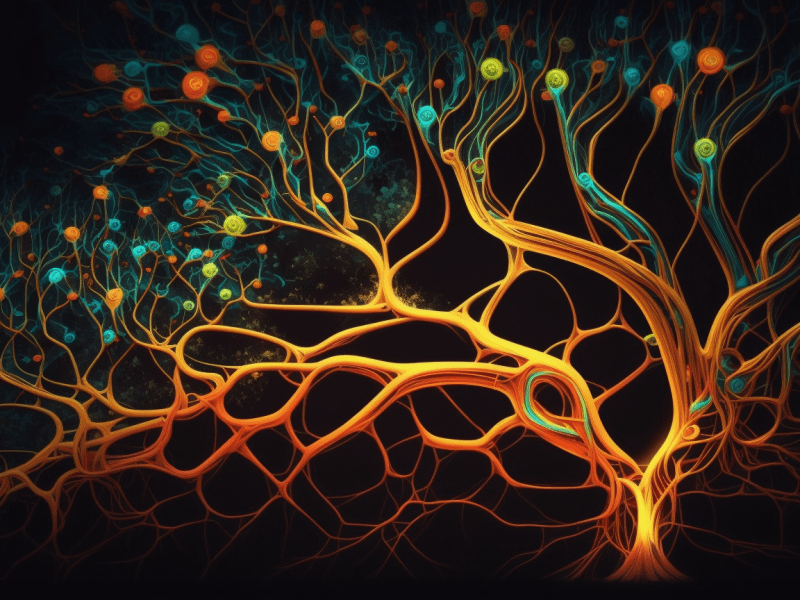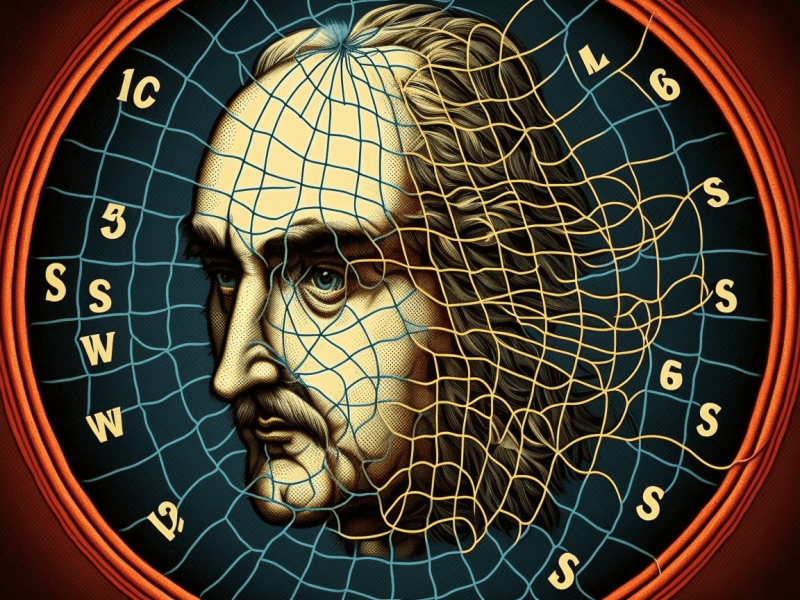Get to know Neural Networks – it’s Part of LLM

The content for Neural Networks:
What are Neural Networks?
Neural Networks are a type of machine learning algorithm inspired by the structure and function of the human brain. They are a set of interconnected nodes, or artificial neurons, that process information and use it to make predictions or decisions. These networks are used in a variety of applications, including image recognition, natural language processing, and autonomous vehicles.
Neural Networks are designed to learn from data, rather than being programmed explicitly. They use a process called backpropagation to adjust the weights and biases of the neurons in the network to minimize errors and improve accuracy. This process allows the network to improve its performance over time and adapt to new data.
Overall, Neural Networks are a powerful tool for solving complex problems that require pattern recognition or decision-making capabilities. They have become increasingly popular in recent years due to advancements in hardware and software technology, and their innovation potential is virtually limitless.
Types of Neural Networks
There are several types of Neural Networks, each with its unique structure and function. Some of the most common types include:
- Feedforward Neural Networks – These networks are the most basic type of neural network and are used for tasks such as image recognition and classification.
- Convolutional Neural Networks – These networks are designed for image and video processing applications and are particularly effective at identifying patterns in visual data.
- Recurrent Neural Networks – These networks are used for sequential data processing tasks, such as speech recognition and natural language processing.
- Self-Organizing Maps – These networks are used for clustering and pattern recognition tasks, and are particularly effective at identifying relationships between data points.
Overall, each type of Neural Network is designed to solve a specific type of problem, and their effectiveness depends on the nature of the data and the task at hand.
How Neural Networks Work
Neural Networks work by processing data through a series of interconnected nodes, or artificial neurons. Each neuron takes in input data, processes it using a set of weights and biases, and produces an output value that is passed on to the next neuron in the network.
The weights and biases in the network are adjusted using a process called backpropagation, which involves comparing the output of the network to the desired output and making small adjustments to the weights and biases to minimize the error. This process is repeated many times until the network can accurately predict the desired output for a given input.
Overall, Neural Networks are designed to learn from data, rather than being explicitly programmed. This allows them to adapt to new data and improve their performance over time.
Training Neural Networks
Training a Neural Network involves feeding it a set of input data, along with the desired output for each input. The network processes the data and produces an output, which is compared to the desired output to calculate an error.
The weights and biases in the network are then adjusted using backpropagation to minimize the error, and the process is repeated for many iterations until the network can accurately predict the desired output for a given input.
Training a Neural Network can be a time-consuming and computationally intensive process, particularly for large datasets or complex networks. However, advancements in hardware and software technology have made it easier and faster to train Neural Networks, and they are now commonly used in a wide range of applications.
Applications of Neural Networks
Neural Networks are used in a wide range of applications, from image recognition and natural language processing to autonomous vehicles and financial modeling.
Some common applications of Neural Networks include:
- Image and Video Processing – Neural Networks are particularly effective at identifying patterns in visual data, making them well-suited for tasks such as object detection and facial recognition.
- Natural Language Processing – Neural Networks can be used to analyze and understand human language, making them useful for tasks such as speech recognition and sentiment analysis.
- Autonomous Vehicles – Neural Networks are used in self-driving cars to process sensor data and make decisions about driving behavior.
Overall, Neural Networks have the potential to revolutionize many industries and solve complex problems that were previously thought to be impossible.
Advantages
Neural Networks offer several advantages over traditional machine learning algorithms, including:
- Adaptability – Neural Networks are designed to learn from data, which allows them to adapt to new situations and improve their performance over time.
- Nonlinearity – Neural Networks can model complex, nonlinear relationships between variables, which makes them well-suited for tasks that involve pattern recognition or decision-making.
- Robustness – Neural Networks can handle noisy or incomplete data, making them useful for real-world applications where data may be imperfect.
Overall, Neural Networks offer a powerful and flexible tool for solving complex problems that require pattern recognition or decision-making capabilities.
Limitations
While Neural Networks offer many advantages, they also have some limitations that should be considered when using them for a particular application.
Some of the limitations of Neural Networks include:
- Overfitting – Neural Networks can sometimes become too specialized for the training data and perform poorly on new data.
- Black Box – Neural Networks can be difficult to interpret, which can make it challenging to understand how they are making decisions.
- Computational Requirements – Neural Networks can be computationally intensive and require specialized hardware to train and run.
Overall, while Neural Networks offer a powerful tool for solving complex problems, they should be used with care and consideration for their limitations.
Future of Neural Networks
The future of Neural Networks is bright, with many exciting developments on the horizon.
Some of the areas of future development for Neural Networks include:
- Deep Learning – Deep Learning involves using Neural Networks with many layers, which allows for more complex and accurate predictions.
- Transfer Learning – Transfer Learning involves using pre-trained Neural Networks to solve new problems, which can save time and improve accuracy.
- Reinforcement Learning – Reinforcement Learning involves training Neural Networks to make decisions based on rewards and punishments, which is particularly useful for tasks such as game playing and robotics.
Overall, the future of Neural Networks is full of promise, and they will likely continue to be an important tool for solving complex problems in a wide range of industries.
Ethical Considerations
As with any technology, Neural Networks raise important ethical considerations that must be carefully considered and addressed.
Some of the ethical considerations of Neural Networks include:
- Bias – Neural Networks can perpetuate and amplify biases in the data they are trained on, leading to unfair or discriminatory outcomes.
- Privacy – Neural Networks can be used to analyze and manipulate personal data, raising concerns about privacy and security.
- Job Displacement – Neural Networks have the potential to automate many jobs, leading to job displacement and economic disruption.
Overall, it is important to consider the ethical implications of Neural Networks and to work towards developing and using them in ways that are fair, transparent, and beneficial to society.
Summary
Neural Networks are a powerful and flexible tool for solving complex problems that require pattern recognition or decision-making capabilities. They are used in a wide range of applications, from image recognition and natural language processing to autonomous vehicles and financial modeling.
While Neural Networks offer many advantages, they also have limitations that must be considered when using them for a particular application. In addition, ethical considerations must be carefully addressed to ensure that Neural Networks are developed and used in ways that are fair, transparent, and beneficial to society.
Overall, Neural Networks have the potential to revolutionize many industries and solve complex problems that were previously thought to be impossible.
Read this books to learn more about Neural Networks
More Subtopics on Neural Networks
Deep Dream Artificial Intelligence – Computer Vision
DeepDream is a computer vision program that uses a convolutional neural network to find and enhance patterns in images via algorithmic pareidolia.
LLM in Conversational AI – what can a Large Language Model Do?
Large language models have revolutionized conversational AI, with strengths & weaknesses. Development opportunities exist, but misuse/abuse must be monitored. “Great power, great responsibility” for large language models.
Deep Belief Network – Mindblowing Potential
DBNs enable us to uncover hidden patterns in data, enabling improved decision-making & social progress.
Recurrent Neural Networks – The superintelligent Network
RNNs offer powerful modeling of seq. data, with advanced methods overcoming training chal. Concerns remain but potential for many appl. in NLP, speech recog. & time series forecasting is great.
Convolutional Neural Network – Shaping the Future
CNNs are deep learning models used for computer vision and image recognition tasks. They learn to extract features from images and classify them for various purposes. Challenges arise with large datasets and limited computing resources, but CNNs have been applied successfully to many domains, such as medical diagnosis and autonomous driving.
Support Vector Machines – Discovering new Possibilities
SVM is a powerful ml algorithm used for various applications like text classification, image recognition and bioinformatics. It has real-world applications in industry and is an important tool in modern data science. Hyperparameter tuning is essential for optimizing performance.
Bayes Nets: Inside the Science of Reasoning
Bayes Nets enable us to make decisions with incomplete data while minimizing risk. They are becoming increasingly popular in ML and can be applied to many real-world scenarios. Understanding and using Bayes Nets can provide invaluable insights, leading to savings and better decision-making.
Large Language Models – Developed to Impress!
Large language models revolutionize NLP, providing more accurate preds & realistic text. GPT-3 has 175B parameters, a staggering number that highlights complexity & power. As AI tech evolves, we can only imagine the possibilities for large language models.
Generative Adversarial Networks – A Revolution in AI
Generative Adversarial Networks (GANs) offer a revolutionary approach to AI, capable of generating realistic images and data. Challenges remain, yet potential applications and breakthroughs await. Exciting times ahead!
Deep Learning Neural Nets – Discover unseen Intelligence now
Deep learning neural nets are revolutionizing AI with powerful applications, but there are challenges with data, computing power, and ethics. Exciting breakthroughs are ahead with continued investment and effort.
Boltzmann Machines: Powering now the Future of AI
Boltzmann Neural Networks (BNNs): efficient tool for modeling complex systems, unique training process mimicking particles in thermodynamics, applications in image recognition, financial forecasting, and more.










